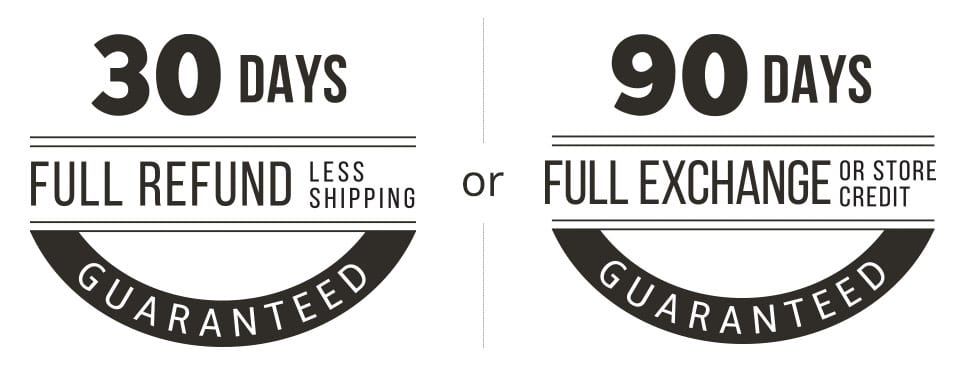Top New Trends In Product Returns 2019-2020
First, WHY ARE WE SO CONCERNED ABOUT A WELL-THOUGHT-OUT STRATEGY FOR ACCEPTING PRODUCT RETURNS?
- Purchases from small businesses are driven more by an attractive returns policy than shopping efficiencies.
- 54% of customers read your returns policy before making a purchase.
- A full-service returns policy has become an expectation of the customer experience.
- An ecommerce returns management solution is key to customers' overall experience which affects how they rate sellers.
TRENDS TO EXPECT IN THE RETURNS ACITIVITIES DURING THE 2019-202 HOLIDAYS

- The rate of Ecommerce returns could shoot up to as high as 60% this Christmas.
- December 26 is the kick-off to the holiday returns season. And during this decidedly less jolly season, some retailers can expect up to 30% to 50% of the merchandise they just sold to come back to them.
- UPS is projecting a 26% increase in ecommerce returns on its “national returns day” on Jan. 2, 2020, when 1.9 million inbound packages are expected to hit its network as ecommerce shipments continues to balloon in Q4.
- Globally, about one in three (36%) online shoppers returned an item in the last three months of last year (2018).
- According to the 2019 UPS Pulse of the online shopper, 61% of customers looks at a retailer's returns policy prior to purchasing.
- The product returns experience impacts future purchasing, and more than 50% of consumers look at the returns policy before making a purchase. Shoppers who purchase more are savvy about the returns process.
- Most retailers accept product returns unconditionally in order to maintain their high customer ratings.
- Sharp increase in the number of customers that return items multiple times a month.
- Shoppers from big retailers like Amazon and Walmart who are used being able to return purchased items for free of charge expect the same privilege from small retailers. They normally just assume the ability to returns items for free, with free shipping and everything, and will have a tendency to give a bad review after finding out that it isn't the case.
-
Online shoppers are more inclined to consciously review your Product Returns Policy; already anticipating
a "what if" a return in necessary. This customer trend is likely to be sustained in many years to come.

- If you are clothing retailer, expect customers to purchase clothes in various sizes and simply returning the ones that didn’t fit.
- One of the top reasons in the increase of ecommerce returns rate is when customers tend to abuse the "inaccurate website description" or “Not as described” reason for requesting to return their purchase. They will reason out the item is too small or too large than it was described.
- Bad returners will attack the most vulnerable part of your item description and facts in order to avoid being charged with return shipping.
- Customers assume that if they claim any reason besides no longer wanted / no longer needed that a seller should provide a free return label.
- Scammers may purposely damage an item before sending it back to seller to be able to claim a return reason that is beyond just "change mind", "no longer wanted", or "found a better deal". Some may even remove parts before sending the item back to claim a "missing parts or accessories" reason.
- Some customers may abuse "Missed estimated delivery date".
WHAT CAN RETAILERS DO TO SOFTEN THE IMPACT OF THESE ECOMMERCE RETURNS TREND OF 2019 TO 2020?
- Some smaller retailers are forced to record a video of the packing of their items to reduce return claims.
- Strike the right balance between having a clear disclosure of your limited returns policy; this may discourage customers a bit but a negative review is worse.
- Watch for repeat customers that buy various sizes of the same item, they are more likely to pick only one and then return the rest.
- If you sell items that come in various sizes, be very clear on how sizes are actually like in real life. If you have to, include a scale representation of the item's relative size compared to a common item. In other cases, it may help to keep your description as simple and concise as possible.
- Make it clear on your Product Returns Policy that returns are subject to inspection to verify the returner's reason for sending the item back. This tend to discourage a customer from abusing the "change mind" return reason.
- Recognize that if the shipping during winter is more challenging for the carriers. Make sure to add a simple note that shipping may be affected by the weather specially if there's severe weather conditions in the forecast. This may help deter bad customers from abusing "Missed estimated delivery date" reason for returning an item.
-
Consider charging a restocking fee, especially if the items you received back are totally fine and the
customers' claim are bogus. Be very careful with this though, as negative review might bite you back in the rear.

- Review and carefully analyze your customer returns history. Then from that analysis, consider adjusting some details of your returns policy. For example, you can charge for return shipping, but offer quick refunds. Or, offer free returns shipping, but shorten the time periods in which to accept return merchandise after the initial purchase.
- As good a rule of thumb, start the design of your return policies with the consumer’s needs as the main driver, then find ways to fine tune it to protect against abusers.
-
Make attractive ecommerce returns process as a merit-based system. For example, reward loyal consumers with
free shipping and returns when their cumulative spend per year reaches a specific threshold. Your
implementation of a super attractive customer-friendly returns policy must be supported by intelligent
analysis of consumer shopping behaviors.

- Consider a product returns policy that limits the number of returns transaction that a customer is allowed to make in a year. For example, make each consumer entitled to five free returns per year. This can curtail the tendency of customer to return items too often.
- Don’t take buyer’s return reasons personally, it’s just part of selling.
- Last but not least, use a flexible "ecommerce returns software" from ReturnsPortal.com - more and more retailers are switching to RMAPORTAL's intuitive and easy-to-use self-service ecommerce returns solution. Your management and customer service reps will not need any formal training to start using RMAPORTAL's product returns software, it's that easy to use!
Next recommended article:













